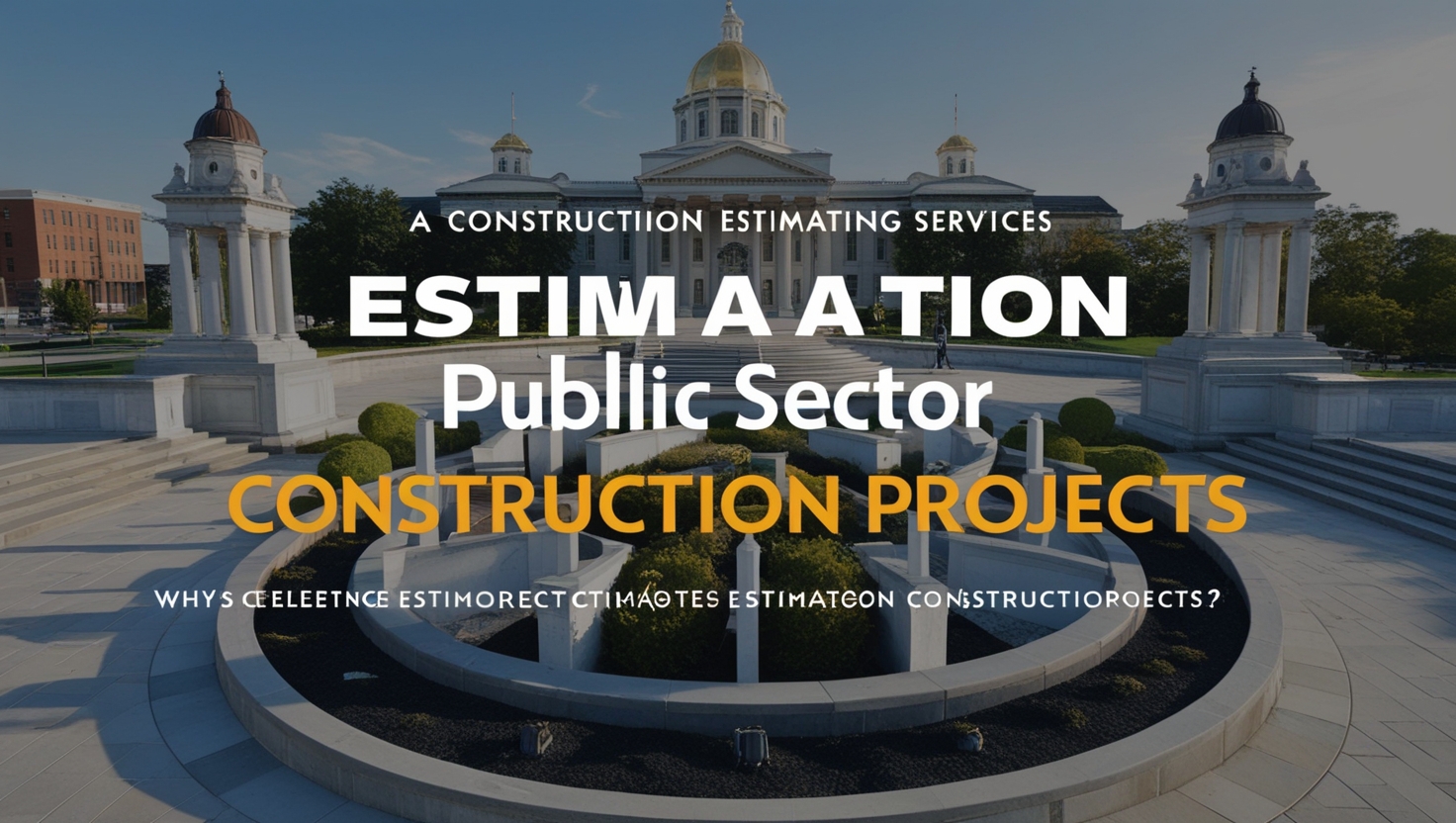When it comes to acceptant domain-building projects, correct assessment plays an important role in ensuring success. These projects were funded by taxpayer money and often involved meaningful investments. Thus, getting the assessment right is not just important—it’s essential. This blog explored why Construction Estimating Services matter so much in accepted domain construction, how to meliorate estimation accuracy, and the normal challenges faced in this field.
What Is Estimation in Construction?
Estimation in building is the process of predicting the costs, resources, and time required to downright a project. This includes:
- Material Costs: The price of all building materials needed.
- Labor Costs: Wages for the workers involved in the project.
- Equipment Costs: Expenses for machinery and tools.
- Overhead Costs: Additional expenses such as indemnity and permits.
Accurate assessment helps in setting tangible budgets, creating efficacious schedules, and ensuring that projects stay within their fiscal limits.
Why Estimation Is Crucial in Public Sector Projects
Ensuring Transparency and Accountability
Public domain projects were funded by taxpayers, which means there is a heightened need for enhancers and accountability. Accurate estimates check that every claim was spent wisely and that the acceptant can see that their money was being used effectively. Misestimation could lead to overspending or mismanagement, which could cost acceptant trust and lead to criticism.
Adhering to Budget Constraints
Public domain projects often have blueish budgets set by authority bodies. Accurate assessment is important for staying within these fiscal limits. A well-prepared justice helps prevent cost overruns and ensures that the learning can be completed without requiring additive funds. This is the basis for maintaining fiscal constancy and avoiding budget shortfalls.
Efficient Resource Allocation
Proper assessment helps in planning and allocating resources effectively. By predicting the sum of materials and labor needed, managers could avoid shortages and check that everything is approachable when required. This prevents delays and keeps the learning on schedule. Efficient resourcefulness parceling also helps in managing costs and avoiding waste.
Managing Risks
Every building involves risks, and correct assessment helps in identifying and managing these risks. By understanding the effectiveness costs and resources required, managers could prognosticate challenges and grow strategies to palliate risks. This active admittance helps in addressing issues before they fit meaningful problems.
Planning and Scheduling
Accurate assessment is vital for creating tangible learning schedules. By estimating the time required for each phase of the project, managers can set manageable deadlines and milestones.
This ensures that the learning progressed swimmingly and was completed on time. Delays in acceptant domain projects could lead to increased costs and disruptions to acceptant services.
Fair Contractor Selection
Public-domain projects with Electrical Estimating Services often need a bidding process where contractors read proposals based on estimated costs. Accurate estimates check that bids are tangible and that contractors are selected based on fair and correct information. This promotes reign and helps in choosing the best declarer for the job.
How to Improve Estimation Accuracy
Develop a Detailed Project Scope
A detailed learning scope is the basis of correct estimation. This involves defining every facet of the project, including pattern specifications, materials needed, and building methods. The more detailed the scope, the more correct the justice will be. Clear learning requirements help in avoiding misunderstandings and ensuring that all aspects are covered.
Utilize Historical Data
Historical data from projects could allow quantitative insights into effectiveness costs and resourcefulness needs. Analyzing past projects helps in identifying trends and making more correct predictions. This data can be used to perplex estimates and improve accuracy. Reviewing past projects also helps in understanding normal challenges and their solutions.
Consult Experts
Engaging experts such as architects, engineers, and building managers could heighten assessment accuracy. Their great ideas could allow quantitative input on effectiveness challenges, costs, and resourcefulness needs. Expert advice helps in creating more unquestionable estimates and addressing compound aspects of the project.
Update Estimates Regularly
Estimation is an ongoing process. Regularly updating estimates based on learned advances and changes helps in maintaining accuracy. This includes adjusting estimates for unlooked-for issues, changes in learning scope, or fluctuations in corporeal costs. Regular updates check that the learning stays on track and inside the budget.
Leverage Technology and Software
Modern engineering and assessment parcels could greatly enhance accuracy. These tools help in analyzing data, calculating costs, and creating detailed estimates more expeditiously than blue-collar methods. Technology could also hang in tracking learn advance and making period adjustments to estimates.
Incorporated Contingency Planning
Including a continence budget in the justice helps in managing unlooked-for expenses. This softening could cover unexpected costs without derailing the intact learning budget. Contingency planning is base for handling emergencies and unexpected changes effectively.
Common Challenges in Estimation for Public Sector Projects
Complex Regulations
Public domain projects often need compound regulations and standards that must be followed. Navigating these regulations can be challenging and may have impacted assessment accuracy. Ensuring entry with legal and regulative requirements is important for avoiding delays and additive costs.
Changing Requirements
Public domain projects could face changing requirements due to policymaking or social factors. These changes could touch the first estimates and need adjustments. Adapting to evolving requirements requires traceableness and efficacious communication with stakeholders.
Bureaucratic Processes
The commendation processes in acceptant domain projects could be slow and bureaucratic. This could lead to delays in learning start times and impact the truth of time estimates. Managing these official challenges requires solitaire and limited planning.
Public Scrutiny
Public domain projects with Lumber Takeoff Service are corrected to high levels of scrutiny. Any misreckoning could lead to acceptant critique and loss of pledge in the project’s management. Maintaining enhancers and providing clear explanations for estimates helps in addressing acceptant concerns and building trust.
Conclusion
An accurate assessment is a base of high-acceptant domain-building projects. It ensures that taxpayer money is spent wisely, resources are allocated efficiently,’ and projects are completed on time and inside budget.
By focusing on detailed learning scopes, utilizing past data, consulting experts, and leveraging technology, acceptant domain projects could attain more correct estimates and slant-meliorate results. Understanding and overcoming normal challenges in assessment hikes enhances the strength and success of these important projects.
Effective assessment not only supports fiscal and resourcefulness direction but also helps in maintaining transparency, managing risks, and ensuring that acceptant domain projects meet their objectives. With limited planning, firm updates, and an active approach, acceptant domain projects could attain success and contribute positively to the community.





